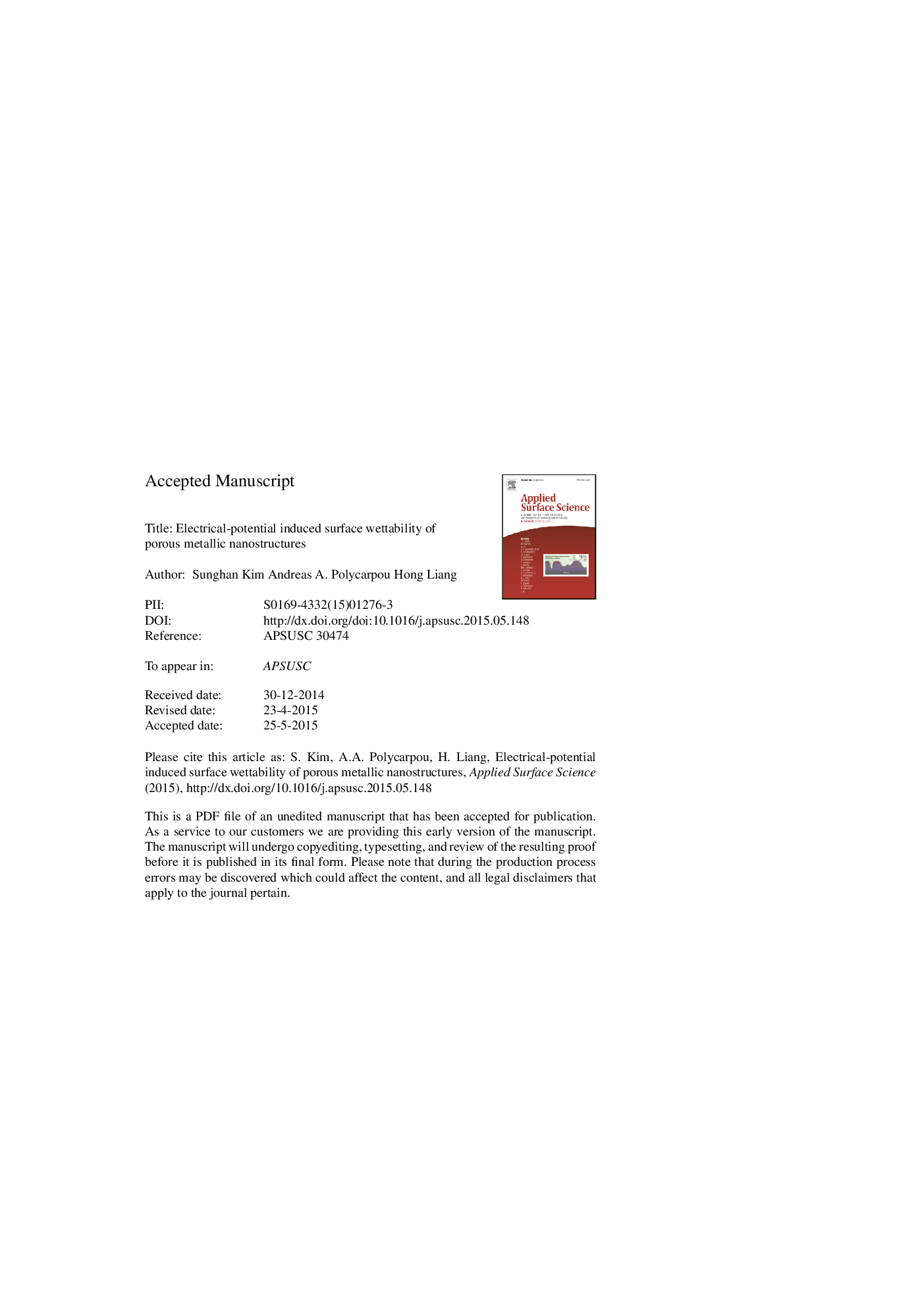| Article ID | Journal | Published Year | Pages | File Type |
|---|---|---|---|---|
| 5357979 | Applied Surface Science | 2015 | 23 Pages |
Abstract
Wettability is a critical factor for the design and fabrication of micro- and nanoscale structures. Manipulating surface wettability using physical methods such as electrowetting is advantageous for many engineering applications. This study examines the effects of an electrical potential on the wettability of a porous metallic nanostructure (PMN). Experimental results in wetting performance showed that applying an electrical potential induces an increase in wettability. Wettability was also affected by pore size, with larger pore sizes exhibiting less wetting. Based on the Young-Lippmann model, a modified equation was proposed to express the force balance between absorbing and repelling at the pore walls. The force balance model was established in terms of the height of a water droplet in the pore. This research reveals that PMNs can be used for numerous electrowetting applications and for fabricating other types of nanostructures.
Related Topics
Physical Sciences and Engineering
Chemistry
Physical and Theoretical Chemistry
Authors
Sunghan Kim, Andreas A. Polycarpou, Hong Liang,
